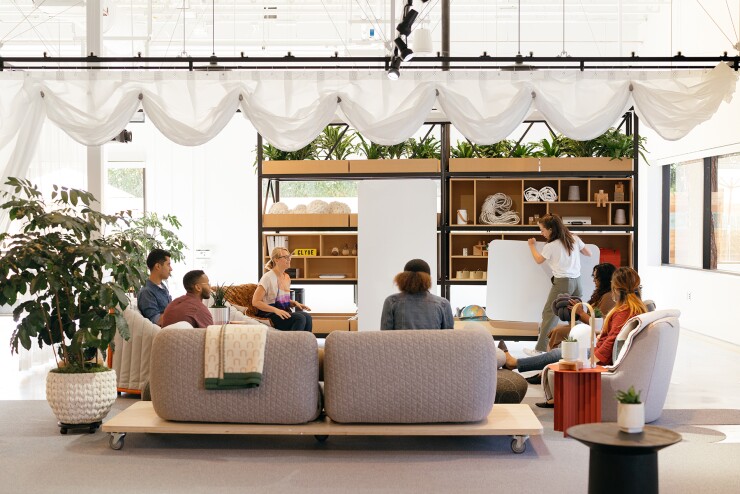David Galullo knows a good workspace. As the CEO and chief creative officer of
Of course, questions around how to work and collaborate have never been more confusing or fast-changing as they are right now. The Rapt team — which has worked with such companies as Goop, Fender, PayPal and Lyft — has spent the past year advising clients on how to get back to work, whether that work is happening in an office, at home or on a
“We’ve learned a lot over the last hundred years about how we work when everyone is in the workplace,” Galullo says. “And we’ve learned a lot over the last year about how we work when no one is in the workplace. And now the hybrid situation is going to be its own different thing.”
Read more:
Galullo spoke with Employee Benefit News about the tough challenges facing employers as they adjust to the evolving circumstances of the COVID-19 pandemic and attempt to make plans for the rest of the year and beyond, all while looking for new, smart ways to support a workforce. Step one? Don’t rush your decisions — and don’t force policies.

How are your clients talking about the so-called
A lot of our clients are expecting to know what’s to come, and we’re tempering that conversation with: We’re still learning. We’re counseling our clients to survey, listen, pay attention. Don’t make permanent policy right now.
Throughout the pandemic, did a lot of businesses jump to conclusions about how they’d use — or not use — their offices?
We had a couple of clients that came out fairly early last year and said they were going to give up their offices and be remote-first moving forward. And we’re now starting to hear from some of them and they do need a space, or a retreat center or a hub.
It does feel like there are a lot of shifting policies right now.
We’re in this weird moment right now where you’re seeing a push-pull. Especially in
Read more:
How should employers work with employees to figure out the next step?
As we’ve seen people get
But
I could work from home forever. It’s lovely — but I’m at an age and point in my career where most of my social engagement doesn’t rely on work. But from my staff’s point of view, we have some team members that live in San Francisco with five roommates in a tiny apartment, because that’s what you have to do in San Francisco. Those people see the office as a place to find peace and quiet. So we have to allow both scenarios to exist.
And that’s where the surveys and conversations with employees come in, to help create synergistic solutions?
Employers can take that feedback and figure out a model that works for everyone — and then give employees the tools and technology to help them succeed. There’s a risk of inequality here: If I have five people working in the office in a conference room, and one person is on a laptop at home, that one person isn’t going to be as engaged as if they were in the room, or if everyone was on Zoom. The solution to some of that is just etiquette, but a part of it is technology, and finding tools to support a hybrid situation.
Read more:
So where does that leave physical office spaces?
In our work, we’re not taking walls down. We’re not totally recreating. We’re taking some desks out, and rearranging spaces to create lounge areas — kind of like labs. So when people come back, they don’t slip into those old habits. Instead, they say, “Oh, this is something new that wasn’t here before,” and that will encourage them to embrace those new ways of working and collaborating. We have to create spaces that bring people together.






